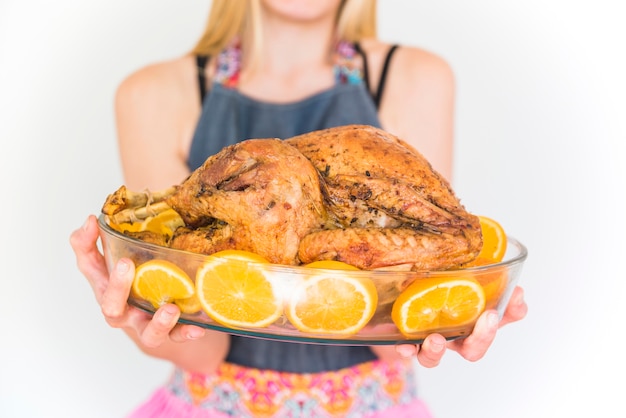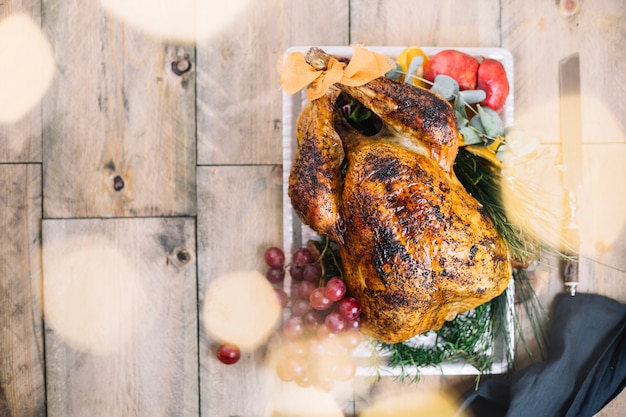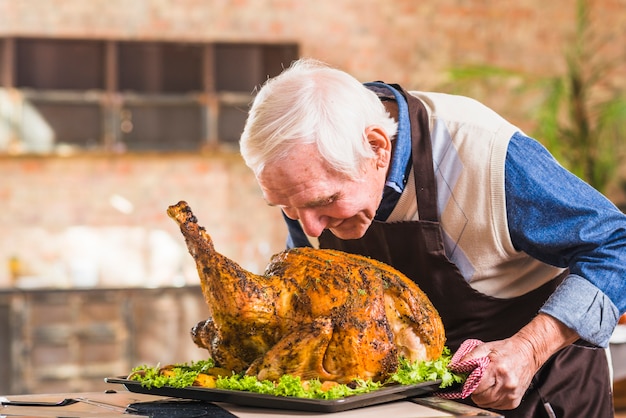chicken breasts are a culinary staple, offering a blank canvas for countless flavour combinations. They're quick to cook, versatile, and budget-friendly. But let's be honest, nailing the perfect cook time can be a bit of a gamble. You want juicy, tender chicken, not dry and rubbery. Nobody wants a dry, rubbery chicken breast!
Having spent years in the kitchen, experimenting and learning the ins and outs of cooking, I've compiled this guide to help you master the art of cooking chicken breast at 350 degrees fahrenheit (or 175 degrees Celsius). We'll cover everything from selecting the right chicken to achieving the perfect texture, along with some delicious recipe ideas to inspire your culinary creativity.
So grab a cuppa, get comfy, and let's dive into the world of cooking perfect chicken breasts.
(Part 1) Choosing Your Chicken

The foundation of any successful chicken breast dish lies in choosing the right chicken. Let's start with the basics.
Size Matters
Size plays a crucial role in cooking time. Larger breasts will require more time to cook than smaller ones. Similarly, thicker breasts will take longer than thin ones. Consider the size and thickness when determining your cooking time.
The Importance of Freshness
Selecting fresh chicken is paramount. Look for chicken breasts that are a pale white or cream colour. Avoid any with bruising, discoloration, or an off-putting odour.
Check the packaging to ensure it's properly sealed and free of any leakage. Store your chicken in the refrigerator until ready to use, keeping it at a safe temperature to avoid spoilage.
(Part 2) Preparing Your Chicken

With your fresh chicken breasts in hand, it's time to prep them for cooking.
Patting It Dry
Patting the chicken breasts dry with paper towels is essential. This removes any excess moisture that could lead to steaming instead of browning, resulting in a crispier skin.
Seasoning Your Chicken: A Symphony of Flavors
Here's where you can unleash your culinary creativity! seasoning chicken breasts offers endless possibilities. From simple salt and pepper to elaborate spice blends and marinades, the choice is yours.
For a classic flavour profile, I recommend a combination of herbs like rosemary, thyme, and oregano, a pinch of paprika for warmth, and garlic powder for a touch of depth. Don't forget a sprinkle of salt and freshly ground black pepper to bring out the chicken's natural flavour.
If you're feeling adventurous, explore the world of marinades. Lemon and garlic, soy sauce and ginger, or honey and mustard are all excellent choices. Allow your chicken to marinate for at least 30 minutes to let the flavours infuse deeply.
(Part 3) Getting Your Oven Ready: The Importance of Preheat

Before you start cooking, make sure your oven is preheated to 350 degrees Fahrenheit (175 degrees Celsius). This is crucial for ensuring even cooking and preventing overcooking.
Why 350 Degrees Fahrenheit?
350 degrees Fahrenheit is a versatile temperature that allows for optimal chicken breast cooking. It's not too hot, preventing burning before the inside cooks through. It's not too low either, ensuring a lovely golden-brown crust develops.
(Part 4) Cooking Your Chicken Breast: Choosing the Right Method
With your oven preheated and chicken prepped, it's time to cook. The method you choose will influence the cooking time and overall texture of your chicken breast.
Methods for oven-baked chicken breasts
Here are a few popular methods for cooking chicken breasts in the oven:
- Baking Sheet: A simple and effective method, allowing for even cooking.
- roasting pan: Offers a slightly different flavour and creates a more moist environment for cooking.
- cast iron skillet: Provides a wonderful crispy texture and even browning.
Whichever method you choose, ensure your chicken breasts are in a single layer on the pan. This allows for even cooking and prevents any parts from overcooking.
(Part 5) The Golden Rule for Cooking Time: A General Guideline
Here comes the big question: how long do you cook chicken breasts at 350 degrees Fahrenheit? Unfortunately, there's no one-size-fits-all answer. Every oven is unique, and each chicken breast varies in size and thickness.
However, there's a general rule of thumb that provides a starting point: Cook your chicken breast for 20-25 minutes at 350 degrees Fahrenheit.
Remember, this is just a guideline. Adjust your cooking time based on the size and thickness of your chicken breasts. The best way to ensure your chicken is cooked through is to check its internal temperature.
(Part 6) Checking the Chicken’s Temperature: Ensuring Safety
Using a meat thermometer is crucial for ensuring your chicken breast is cooked through to a safe internal temperature. Insert the thermometer into the thickest part of the chicken breast. The chicken is considered safe to eat when it reaches an internal temperature of 165 degrees Fahrenheit (74 degrees Celsius).
Resting: A Key Step for Juiciness
After cooking, let your chicken breast rest for 5-10 minutes before carving and serving. This allows the juices to redistribute throughout the meat, resulting in a more tender and juicy chicken breast.
(Part 7) Signs of a Perfectly Cooked Chicken Breast: Visual Cues
Checking the internal temperature with a meat thermometer is the most accurate way to ensure your chicken breast is cooked through, but visual cues can also provide a good indication.
Visual Indicators of Doneness
- Golden-Brown Colour: The chicken breast should have a lovely golden-brown colour on the outside.
- Firm Texture: The chicken breast should be firm to the touch when pressed.
- No Pink in the Middle: The chicken breast should no longer be pink in the middle. If it's still pink, it needs to cook a bit longer.
Overcooked Chicken: Recognising the Signs
If your chicken breast is overcooked, it will be dry and rubbery. You can try to salvage a dry chicken breast by adding moisture, such as sauce or gravy, but it won't be as flavorful as a perfectly cooked breast.
(Part 8) chicken breast recipes for Inspiration: A World of Flavors
Armed with your chicken breast cooking knowledge, you're ready to create delicious dishes. Here are a few recipe ideas to get your culinary creativity flowing.
Simple and delicious chicken Breast Recipes
- Chicken Breast with Lemon and Herbs: A quick and easy weeknight dinner. Season your chicken breasts with salt, pepper, lemon zest, and fresh herbs like thyme and oregano. Bake until cooked through and enjoy with roasted vegetables or a salad.
- Honey Garlic Chicken Breast: A sweet and savory treat. Coat your chicken breasts in a mixture of honey, soy sauce, garlic, and ginger. Bake until cooked through and serve with rice or noodles.
- Chicken Breast with Creamy Mushroom Sauce: A decadent meal. Cook your chicken breasts in the oven. Meanwhile, prepare a creamy mushroom sauce with butter, mushrooms, and heavy cream. Pour the sauce over the cooked chicken breasts and serve with mashed potatoes or roasted vegetables.
(Part 9) FAQs: Addressing Common Questions
Let's tackle a few common questions you might have about cooking chicken breasts.
How Long Should I Let My Chicken Rest After Cooking?
It's best to let your chicken breast rest for about 5-10 minutes after cooking. This allows the juices to redistribute throughout the meat, resulting in a more tender and juicy chicken breast.
Can I Cook Chicken Breasts at a Lower Temperature?
You can cook chicken breasts at a lower temperature, but it will take longer. If you're cooking your chicken breasts at 325 degrees Fahrenheit (160 degrees Celsius), for example, you'll need to add a few more minutes to the cooking time.
What Happens If My Chicken Breast Is Overcooked?
If you overcook your chicken breast, it will be dry and rubbery. The best way to prevent this is to check the internal temperature of the chicken breast with a meat thermometer.
Can I Cook frozen chicken Breasts in the Oven?
You can cook frozen chicken breasts in the oven, but it will take longer. Add about 50% more time to the cooking time for frozen chicken breasts. Make sure to check the internal temperature of the chicken breast to ensure it is cooked through.
What Happens If My Chicken Breast Is Undercooked?
It's essential to ensure your chicken breast is cooked through to prevent foodborne illnesses. If you're not sure if your chicken breast is cooked through, it's always best to cook it a little longer.
And there you have it! A comprehensive guide to cooking chicken breasts at 350 degrees Fahrenheit, equipping you with the knowledge and confidence to create delicious and perfectly cooked chicken breasts every time. Now go forth and cook!
Everyone is watching

Corn on the Cob: The Ultimate Guide to Perfectly Cooked Ears
Healthy MealsAh, corn on the cob. Just the name evokes images of sunny days, barbecues, and that sweet, juicy flavour that ...

Perfect Pork Roast Oven Cooking Time: A Guide to Delicious Results
Healthy MealsThere's something truly satisfying about a perfectly roasted pork. The aroma alone is enough to make your mout...

Ham Cooking Time: How Long to Bake, Smoke, or Boil a Delicious Ham
Healthy MealsAh, ham. It's a classic, isn't it? A real crowd-pleaser, especially around holidays. And when done right, it'...

Scallops: The Ultimate Guide to Perfect Cooking
Healthy MealsAh, scallops. Those delicate, sweet, and utterly delicious morsels of the sea. They hold a special place in my...

Spaghetti Squash: The Ultimate Guide to Cooking and Serving
Healthy MealsRemember that time you saw spaghetti squash at the supermarket, looking all bumpy and strange, and thought, "W...
